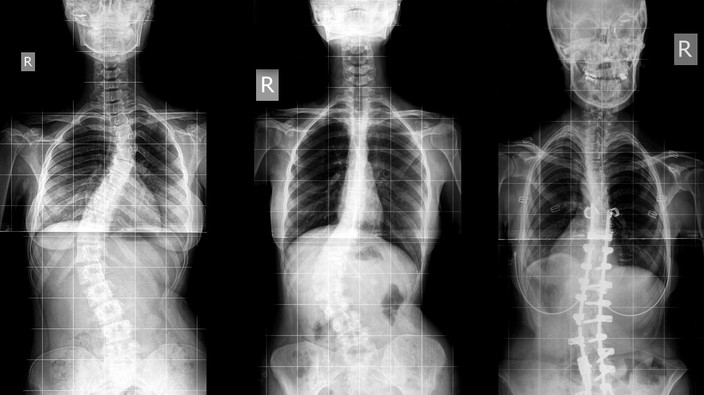what are the symptoms of scoliosis?
most cases are mild, but sometimes a brace is required to prevent the condition from worsening.

while most instances of scoliosis are mild, severe cases can cause the rib cage to press against the lungs, making it difficult to breathe. getty
scoliosis refers to an abnormal curvature of the spine that results in changes to a person’s shoulders, rib cage, pelvis and the overall shape of their back. this curve, which leaves the spine looking more like an s or c than a straight line, often goes undetected and, in many cases, does not require treatment. the most common types of scoliosis, according to the b.c. children’s hospital, are idiopathic (of unknown cause), congenital (present at birth) and neuromuscular (caused by a disease or condition such as cerebral palsy or spinal bifida). while most instances of scoliosis are mild, severe cases can cause the rib cage to press against the lungs, making it difficult to breathe. scoliosis is usually diagnosed in adolescence and is generally painless, but a brace may be required to prevent the condition from worsening. the most common form of adult scoliosis is degenerative, meaning the curvature is the result of an aging spine, but the condition can be the product of a childhood case of scoliosis that went undiagnosed.
although severe cases of scoliosis may need to be corrected by surgery, most people with this condition are able to lead normal, healthy lives and participate in most activities.
advertisement
symptoms of scoliosis
mild scoliosis often goes unnoticed in children, according to my health alberta, but early signs of the condition include:
- having one hip or shoulder that looks higher or sticks out more than the other
- having a head that does not appear centred over the body
- having a waistline that looks flat on one side
- having ribs that appear higher on one side when bending forward at the waist
diagnosing scoliosis
a doctor will typically perform a physical exam to see if a child’s ribs and shoulders are even and may order an x-ray to get a better look at the alignment of the spine. the size of a spine’s curve is measured in degrees, with small curves considered to be less than 20 degrees, moderate curves falling between 20 and 50 degrees and large curves exceeding 50 degrees.
treating scoliosis
although mild cases of scoliosis do not usually require treatment, a doctor will likely examine the extent of the curve every four to six months to ensure it stays that way. if the condition worsens, it may be recommended that a young patient wears a back brace until they are finished growing. because wearing such a brace can be mentally challenging for a child — and limit some of the activities in which they wish to engage — it is important to be understanding and supportive throughout treatment. in severe cases, surgery (such as spinal fusion) may be required to prevent the curvature of the spine from worsening.
advertisement
preventing scoliosis
most forms of scoliosis cannot be prevented and the condition may be more likely if it runs in the family. no matter the treatment prescribed, however, it is important to lead a healthy lifestyle by being physically active (through yoga, pilates or other activities that improve core strength), eating healthy, quitting unhealthy behaviours and checking in with a doctor regularly.
prevalence of scoliosis
studies estimate that between 120,000 and 180,000 adolescents in canada (or two to three per cent of children) suffer from adolescent idiopathic scoliosis, with the majority requiring clinical monitoring but not surgery.
support for scoliosis
for more information about scoliosis, visit b.c. children’s hospital. to find a support group in your area, you can check out curvy girls, an international peer support group for girls.
dave yasvinski is a writer with healthing.ca
thank you for your support. if you liked this story, please send it to a friend. every share counts.
 3 minute read
3 minute read





